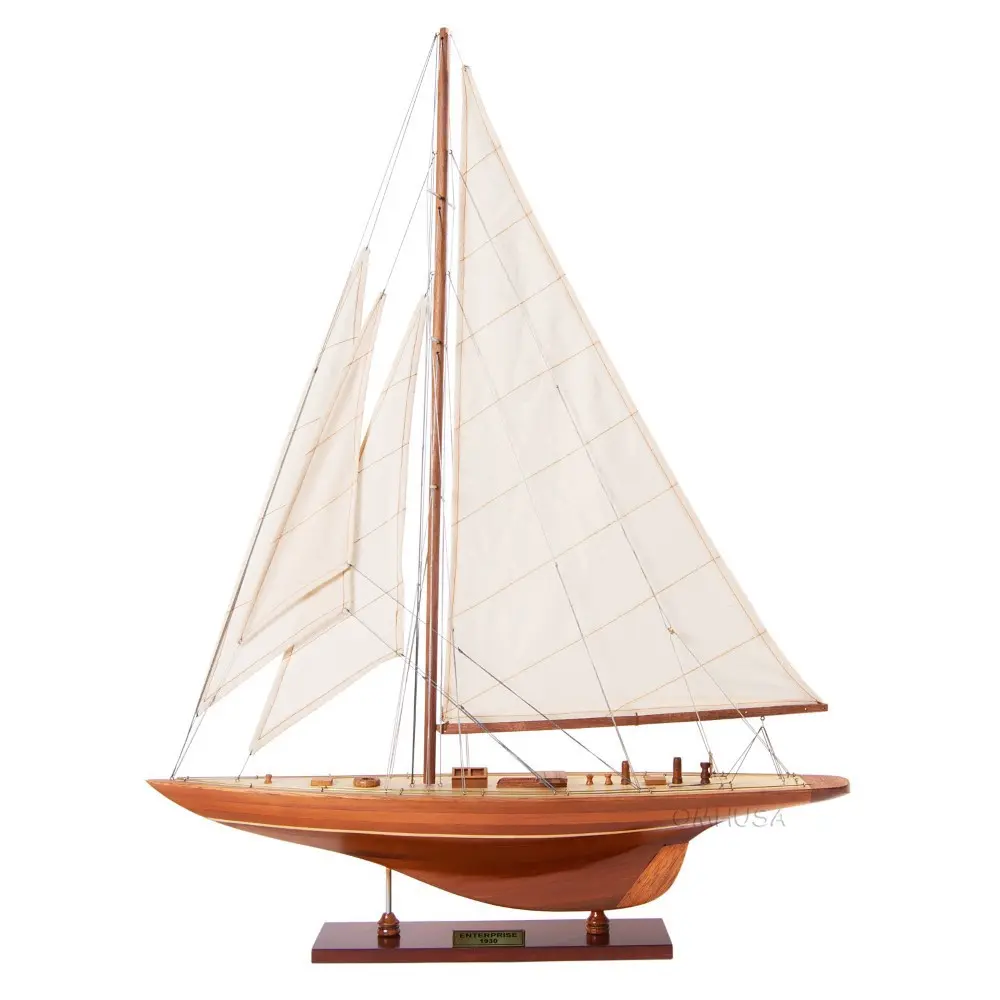Description:
Our Enterprise Yacht model is scratch-built, plank-on-frame by skillful and creative master craftsmen. Strip by strip of mahogany and teak were carefully assembled. It was constructed to scale based on original plans, pictures, and drawings.
The hull is truly beautiful—meticulously crafted using the finest materials to achieve a smooth surface on both sides. On the yacht, you can easily spot the gorgeous wooden parts and ornaments such as the wooden mast, wooden boom, wooden bunkers, front and main sails with detailed stitching, wooden pole and metal steering, metal railing, and much more. We only use high-quality wood and metal in the construction, with absolutely no plastic parts.
This exquisite model rests on a painted, solid wooden stand. To enhance value and recognition, a shiny metal nameplate engraved with “Enterprise 1930” is included.
Note: This model comes fully assembled and securely packaged, ready to display in any corner. No assembly is required
History:
In response to Sir Thomas Lipton’s challenger Shamrock V, four American syndicates came forward to commission their own contenders for the 1930 America’s Cup. Among them, naval architect Starling Burgess took charge of one New York syndicate’s effort. To strengthen the design, he enlisted the legendary Nathaniel “Nat” Herreshoff, often called the “Wizard of Bristol” and considered the dean of American yacht design, as his adviser.
Together, Burgess and Herreshoff created Enterprise, a groundbreaking J-class yacht that set new standards in racing technology. Measuring 80 feet at the waterline, Enterprise featured a heavy keel with twin centerboards, giving her superior stability and maneuverability. One of her most striking innovations was her towering 162-foot aluminum mast, constructed from two hollow tubes tapering from 18 inches at the base to 9 inches at the top. This lightweight yet strong structure was supported by an advanced web of rigging and stays.
Below deck, Enterprise was equipped with an impressive 24 winches, allowing her crew to manage sails and lines with unprecedented efficiency. The yacht’s sleek form and state-of-the-art construction made her the largest and fastest racing machine of her time.
Enterprise quickly outperformed the other three American contenders in the defender trials and was chosen to represent the United States against Shamrock V. The decisive races took place off Newport, Rhode Island, in September 1930. Enterprise demonstrated clear superiority, defeating Shamrock V in a four-race sweep, ensuring that the America’s Cup remained in American hands.
Her victory reinforced the United States’ dominance in international yacht racing and extended the nation’s 80-year record of uninterrupted possession of the Cup, further establishing the J-class as the pinnacle of competitive sailing during the early 20th century,



